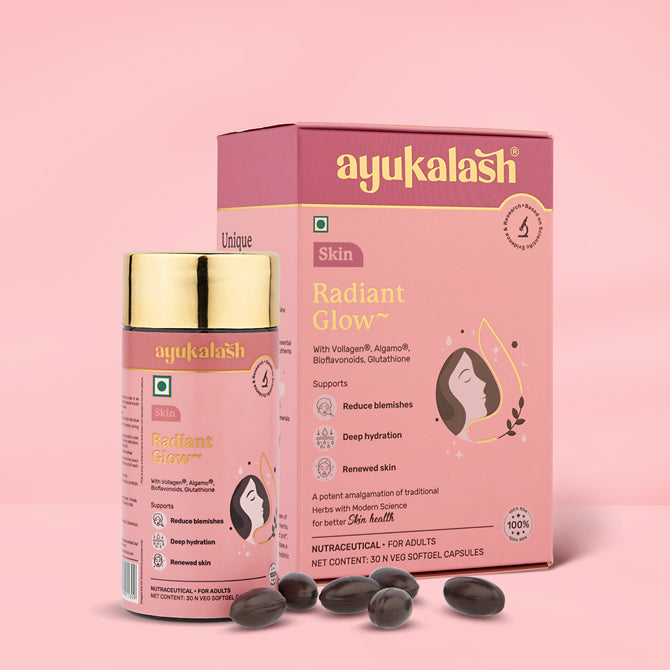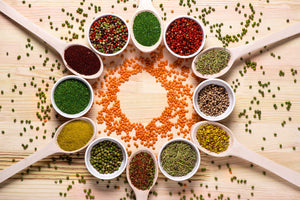Understanding the Doshas: A Beginner’s Guide to Ayurveda

Ayurveda, the ancient Indian system of holistic health, revolves around the concept of doshas, which are fundamental energies governing the body and mind. Understanding these doshas can help you achieve balance, optimize your well-being, and live in harmony with nature. This beginner’s guide will help you navigate the world of doshas in Ayurveda, explore dosha types, and discover how they influence your health and lifestyle.
What Are Doshas in Ayurveda?
In Ayurveda, doshas are bio-energetic forces derived from the five elements—earth, water, fire, air, and space. These elements combine to form the three primary doshas: Vata, Pitta, and Kapha. Each dosha type represents a unique combination of physical, mental, and emotional characteristics, and understanding your dominant dosha can help you align your habits, diet, and lifestyle for better health.
The 3 Ayurveda Body Types
-
Vata Dosha: The Energy of Movement Vata is associated with air and space and governs all movement in the body, including breathing, circulation, and digestion. People with a dominant Vata dosha tend to be creative, energetic, and quick thinkers, but they may also experience anxiety, dryness, and irregular digestion.
-
Characteristics:
-
Thin body frame and dry skin.
-
Quick learners but prone to forgetfulness.
-
Irregular appetite and sleep patterns.
-
Balancing Vata:
-
Eat warm, cooked, and grounding foods like soups and stews.
-
Practice calming activities like yoga and meditation.
-
Maintain a consistent daily routine.
-
Pitta Dosha: The Energy of Transformation Pitta is associated with fire and water and governs digestion, metabolism, and energy production. Ayurveda Pitta types are often ambitious, intelligent, and goal-oriented but may struggle with irritability, inflammation, and overheating.
-
Characteristics:
-
Medium build with warm, oily skin.
-
Strong appetite and sharp intellect.
-
Prone to anger and impatience.
-
Balancing Pitta:
-
Consume cooling foods like cucumbers, melons, and leafy greens.
-
Avoid spicy and fried foods to prevent overheating.
-
Engage in calming activities like swimming and spending time in nature.
-
Kapha Dosha: The Energy of Stability Kapha is associated with earth and water and provides structure, stability, and lubrication in the body. Kapha types are nurturing, calm, and strong, but they may face challenges like sluggishness, weight gain, and congestion.
-
Characteristics:
-
Solid, heavier build with smooth, oily skin.
-
Slow but steady learners.
-
A tendency towards lethargy and attachment.
-
Balancing Kapha:
-
Eat light, warming, and spicy foods like ginger and chili.
-
Incorporate regular exercise into your routine.
-
Avoid heavy, oily, and overly sweet foods.
Identifying Your Dosha Type
Determining your dominant dosha type is the first step in understanding your Ayurvedic constitution. Most people are a combination of two doshas, with one being more dominant. For example, you could be a Vata-Pitta type or a Pitta-Kapha type.
To identify your dosha:
-
Pay attention to your physical traits, emotional tendencies, and behavioral patterns.
-
Take online quizzes or consult an Ayurvedic practitioner for a detailed assessment.
How Doshas Influence Your Health
Each dosha has specific strengths and vulnerabilities that affect your physical and mental well-being. When your doshas are balanced, you experience vitality, clarity, and harmony. However, imbalances can lead to health issues:
-
Vata Imbalances: Dry skin, constipation, anxiety, and insomnia.
-
Pitta Imbalances: Heartburn, skin rashes, irritability, and anger.
-
Kapha Imbalances: Weight gain, congestion, lethargy, and depression.
By understanding your dosha type and making adjustments to your diet, lifestyle, and daily routine, you can prevent imbalances and maintain optimal health.
Dosha-Specific Diet Tips
Ayurveda places great emphasis on a personalized diet based on your dosha type. Here are some general dietary guidelines:
-
Vata Diet:
-
Focus on warm, moist, and grounding foods.
-
Include oils, nuts, root vegetables, and cooked grains.
-
Avoid raw, cold, and dry foods.
-
Pitta Diet:
-
Opt for cooling, hydrating, and mildly spiced foods.
-
Incorporate sweet fruits, dairy, and bitter greens.
-
Limit caffeine, alcohol, and spicy foods.
-
Kapha Diet:
-
Eat light, dry, and warming foods.
-
Emphasize fresh fruits, vegetables, and whole grains.
-
Avoid heavy, oily, and sugary foods.
Daily Practices to Balance Your Doshas
In addition to dietary adjustments, Ayurveda recommends daily practices to balance your doshas and promote well-being:
-
Abhyanga (Self-Massage): Use dosha-specific oils to nourish your skin and calm your mind.
-
Dinacharya (Daily Routine): Follow a structured routine, including waking up early, practicing mindfulness, and eating at consistent times.
-
Exercise: Choose activities that suit your dosha type. For example, Vata types benefit from gentle yoga, while Kapha types thrive with vigorous workouts.
Final Thoughts
Understanding the doshas in Ayurveda provides valuable insights into your unique constitution and empowers you to make mindful choices for your health. By identifying your dosha type and adopting personalized dietary and lifestyle practices, you can achieve balance and harmony in all aspects of life.
Start your Ayurvedic journey today by exploring the principles of doshas and aligning with nature’s rhythm. With time and practice, you’ll unlock the secrets to a healthier, happier you.













